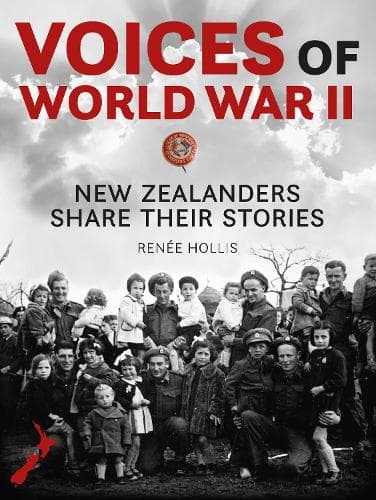Review: Voices of World War II: New Zealanders Share Their Stories
Reviewed by David Christian
If you’re just off to bed hoping for a short read before a good night’s sleep, I cannot recommend Voice of World War II: New Zealanders Share Their Stories because once you open it, it will be hours before you can close it.
Whether you choose to just dip into it or start a continuous read, it will captivate you. This remarkable publication details an era in New Zealand’s modern history that needs to be read and understood by those who were part of it through to baby-boomers and the digital device captives in the current generation. Indeed, there is much for the modern generation to appreciate.
Voices is an in-depth educational review of New Zealand’s coming-of-age. The amount of research between its covers is, to use a modern slang, ‘awesome,’ and it is lavishly illustrated with photographs, maps, diagrams reproductions and artworks.
The effects of the war that New Zealanders had to tolerate make today’s sacrifice for the covid lockdowns and restrictions seem perhaps trifling, however irritating they are. Unsurprisingly, many of the restrictions and rationings were very much like what the people of the United Kingdom had to endure. As a young boy raised in wartime London, I clearly remember many of these impositions.
Voices vividly reminds one of these sacrifices in New Zealand through the reminiscences of its many contributors. They make for fascinating reading and, once again, the reader is reminded not to start this book at bedtime.
It is not a book of tedious statistics. It is vibrant and alive because of its photographic and illustrated depiction of life in this far-off quiet country in that crucial time. It is a window of what life was like in city, urban and country New Zealand post WWI and in the years of the 1930s running up to and into WWII.
In those years New Zealand was still very much a country of British culture. And it shows. One can choose to just ‘look at the pictures’ or absorb oneself in the captivating, thought provoking stories of the many contributors. Either way it is a book worthy of any New Zealand household and there should be a copy in every RSA.
But those who sacrificed the most were, of course, soldiers, sailors and airmen, the fighting personnel; especially those posted overseas to the fighting fronts far away from home and hearth to hostile environments.
This huge disruption to normal civilised life is described here in illustrated depth. Very early in the book there is an important description of the formation of the Māori Battalion and its huge contribution to New Zealand’s fighting capacity with an excellent description and fascinating photos. New Zealand even had its own ‘Dad’s Army’ home guard; Voices details this too and it can be seen as very similar to the British home guard.
As a physical article the book is simply superb, an absolute delight to possess. Hard bound, it is printed and bound to the highest production standards and evocatively illustrated on the front and back covers. The selected paper is of a most satisfying quality in its weight and texture; the printing and reproductions are crisp and clear and of the best.
Voices may be considered as an important document of young Aotearoa New Zealand’s 20th century history and coming of age but boring history it is not. Cleverly formatted, it is presented in a most enjoyable and eminently readable way. Yes, it is a story born out of war but as such it shows how the nation came together, strived during a time of adversity and matured because of it. One hopes that our uniting against the latest invisible and illusive enemy in our midst will strengthen our country even more. Having and perusing this highly recommended book will help; it is a worthy addition to anyone’s library.
Reviewed by David Christian
